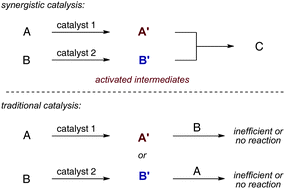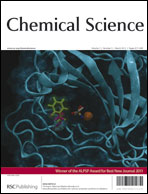Synergistic catalysis: A powerful synthetic strategy for new reaction development
Abstract
Synergistic catalysis is a synthetic strategy wherein both the nucleophile and the electrophile are simultaneously activated by two separate and distinct

- This article is part of the themed collections: Celebrating 15 years of exceptional research in Chemical Science and Celebrating our 2019 Prize and Award winners

 Please wait while we load your content...
Please wait while we load your content...